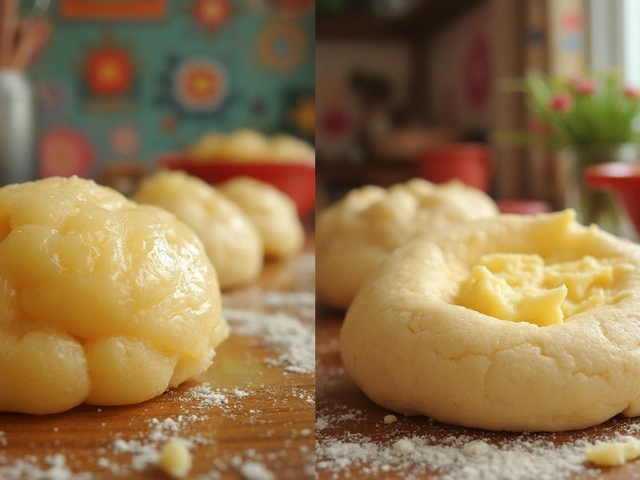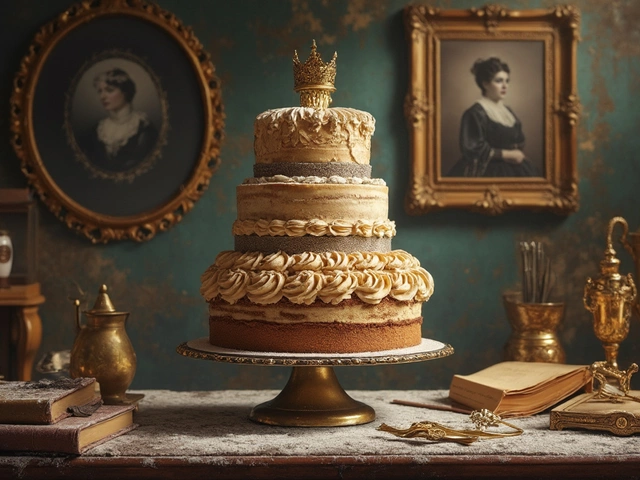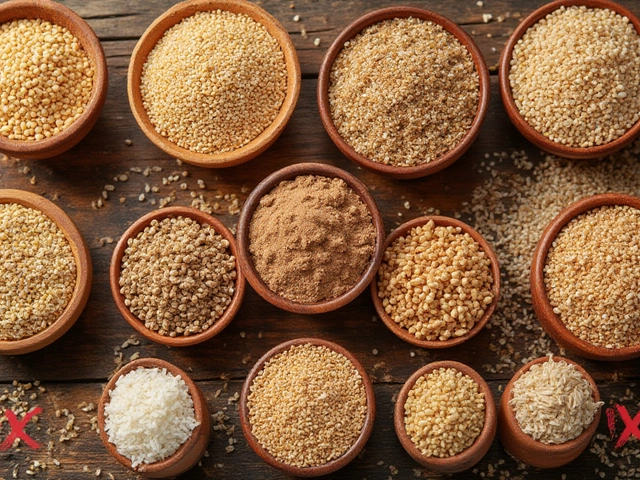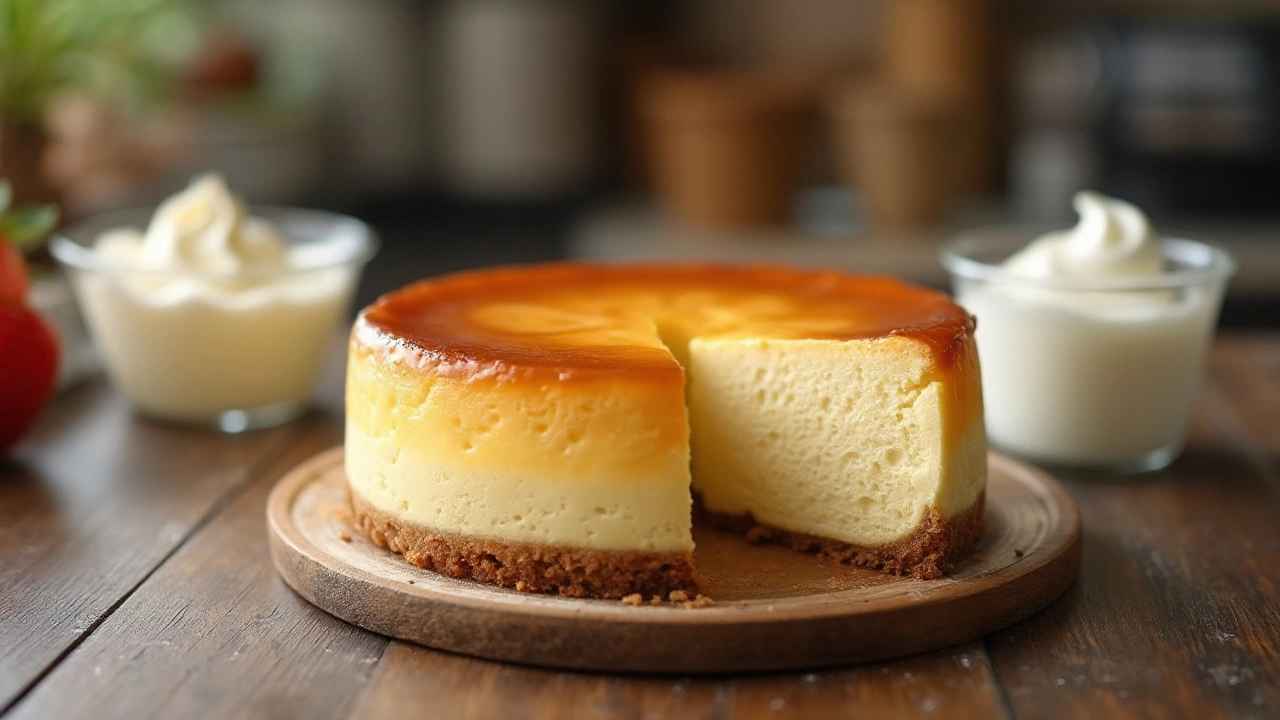
Cheesecake is one of those desserts that balances on the delicate edge of decadence and simplicity. At the heart of this treat lies a key decision that can shape its taste and texture: should you use cream or sour cream? Cheesecake lovers know the glory of that first creamy bite, but what they might not always consider is how each ingredient contributes to that meltingly smooth finish.
Traditionally, cheesecake recipes call for either cream or sour cream, each producing subtle differences that can significantly impact the flavor profile. Cream offers a rich, straightforward sweetness and a smooth structure. On the other hand, sour cream introduces a slight tang and a bit more lightness to the texture.
This article will guide you through the pros and cons of each, drawing on both expert recommendations and some practical tips from seasoned home bakers. Whether you're a novice at the cheesecake game or someone looking to refine an old favorite, understanding these foundation choices will be essential in crafting that perfect slice.
- The Classic Cheesecake Formula
- How Cream Affects Cheesecake
- Sour Cream's Role in Cheesecake
- Choosing Between Cream and Sour Cream
- Tips for Baking the Perfect Cheesecake
The Classic Cheesecake Formula
The quintessential cheesecake is a harmonious blend of creaminess, sweetness, and a delightful crust that perfectly complements the filling's lush texture. The roots of this beloved dessert stretch back to ancient times, with variations found throughout Greek and Roman culinary history. Over time, its transformations and adaptations have led us to the modern classic we enjoy today. A traditional cheesecake recipe usually begins with a crust, most often made from crushed graham crackers, combined with melted butter and a touch of sugar to bind the ingredients into a firm base. This buttery and crumbly crust is pressed evenly into the bottom of a springform pan, which gives the cheesecake its iconic shape and holds everything together during baking.
The filling is where the heart of a cheesecake lies. At its core, it consists of cream cheese, sugar, and eggs, which work in tandem to create the rich texture and subtle flavors of the dessert. Cream cheese, originally produced in the United States in the late 19th century, is a staple in American-style cheesecakes. It brings both heft and tanginess to the filling, essential qualities that define the cheesecake profile we know and love. Sugar is added to sweeten the pot, carefully measured to balance the tang of the cream cheese without overpowering it. Eggs play a crucial role not only as a binding agent but also in creating a lush, custardy texture once the cake sets. The process involves beating the cream cheese until it's smooth and combining it with sugar before gently mixing in the eggs one at a time.
Some bakers opt to elevate their cheesecake by infusing the filling with additional flavors, ranging from a hint of vanilla extract to zests of lemon or orange, which add a refreshing depth to each bite. There is a great debate among cheesecake aficionados about the role of heavy cream versus sour cream in modifying the filling's texture and overall taste. Heavy cream contributes to a silkier, more consistent texture, while a touch of sour cream can introduce a nuanced complexity with its subtle tanginess. As with many culinary decisions, the choice between the two often boils down to personal preference, something this article seeks to explore further.
"The secret to a perfect cheesecake is in the baking method," says renowned pastry chef Paul Hollywood. "A water bath is my preferred technique to ensure even heat distribution, preventing cracks and producing that divine smooth finish."Baking the cheesecake in a water bath, or bain-marie, helps achieve that signature creamy texture by gently cooking the filling without harsh direct heat. It's akin to a sauna for your cake, enveloping it in warmth and moisture. The slow baking process also aids in preventing the dreaded cracking on the cake's surface, a common issue when cheesecakes are exposed to sudden temperature changes. After baking, patience is key; cooling the cheesecake gradually in the turned-off oven can further reduce the risk of cracks.
Whether you're a purist or an innovator, understanding the classic formula provides a solid foundation upon which any variations can be built. Whether you're using traditional heavy cream or exploring the unique properties of sour cream, knowing the basics allows you to experiment with confidence, ensuring your cheesecake becomes a masterpiece every time. Embracing the classic formula gives ample room for bakers to infuse their cheesecake with distinct personal touches, be it through textured toppings like fresh fruit and nuts or decadent drizzles of chocolate and caramel. Appreciating the balance and the science behind the classic cheesecake lets us respect the tradition, all while nudging us to craft our unique renditions.
How Cream Affects Cheesecake
Incorporating cream into cheesecake recipes is a decision that most often hinges on the desired texture and flavor profile you want to achieve. Cream, especially heavy or whipping cream, adds a luxurious richness to the dessert that is both indulgent and smooth. When you add cream to the batter, it integrates with the cream cheese to create a silkier, more cohesive mixture. This results in a dessert that feels almost like a velvety cushion on the tongue—a hallmark of many traditional New York-style cheesecakes.
The fat content in cream is a crucial factor in determining the creaminess of your cheesecake. Higher fat content not only enhances the depth of flavor but also stabilizes the cake, reducing the risk of cracks as it bakes and cools. For many bakers, using cream results in that classic rich texture they crave. This is especially true if you're aiming for decadence and want every bite to feel like an event. An interesting fact is that most standard creams used typically contain at least 36% milk fat, which contributes significantly to the texture and mouthfeel.
Moreover, cream contributes to the structural integrity of the cheesecake. It ties in with the proteins and sugars, creating a sturdy, yet supple cake that cuts cleanly and maintains its form when sliced. Contrary to lighter cheesecakes that might use sour cream, a cream-based option won't have quite the same tangy bite, which some might miss but many adore for its directness in flavor. As acclaimed pastry chef Dominique Ansel once mentioned in an interview, "There is a unique satisfaction in the outright richness cream brings to pastries," and this holds especially true for cheesecakes, where the balance of ingredients is essential.
For those who still crave a little more indulgence, try adding flavored creams such as sweetened vanilla or even a touch of liqueur-infused cream. This versatile ingredient not only allows for different flavor profiles but also permits a degree of creativity, influencing the cheesecake’s characteristic taste. However, remember that the type of cream you choose—whether light, whipping, or heavy—will significantly alter the end result, so it's wise to experiment and find what best suits your palate. When done right, a cream-centered cheesecake can be an opulent classic, effortlessly stealing the spotlight on any dessert table.
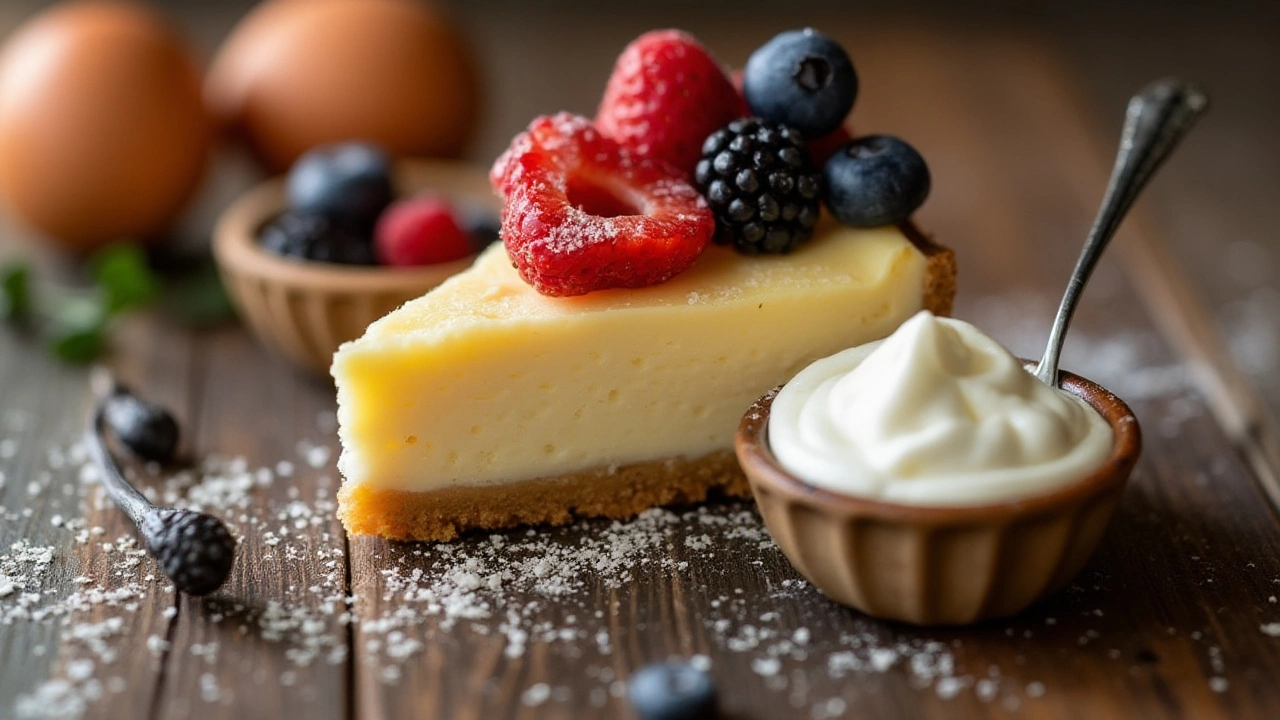
Sour Cream's Role in Cheesecake
Sour cream in cheesecake recipes can be something of a game-changer. While both cream and sour cream aim to achieve a similar goal of creamy consistency and moisture retention, sour cream adds an unexpected depth of flavor. This popular dairy product is known for its unique tang, an accent that pairs beautifully with the sweetness of the cheesecake. What makes sour cream so special for a cheesecake is its ability to cut through the richness, offering a refreshing contrast that prevents the dessert from feeling overwhelmingly heavy. It's a choice that has earned a permanent spot in many beloved recipes, thanks to its knack for creating balance.
Incorporating sour cream in your cheesecake not only enhances its taste but also affects its texture. By adding a lush smoothness without the added sweetness that other creams can bring, sour cream makes your cheesecake more approachable, especially for those who prefer a less saccharine profile. This characteristic is particularly appreciated when showcasing the cheesecake alongside bold toppings like fruits or drizzles. Additionally, sour cream helps maintain a light, almost airy body to the cake, ideal for those moments when a dense cake isn't the goal. If you're using sour cream, it often requires no additional changes to your existing recipe, making it a simple swap for curious bakers eager to experiment.
There's an old saying in the culinary world that cheesecake needs a little edge to it to be perfect. That edge often comes courtesy of sour cream. It's no surprise that many pastry chefs, like the famed Alice Medrich, endorse this change.
"Sour cream gives cheesecake that signature tang which breaks the monotony of creaminess and adds character," says Medrich, an award-winning dessert cookbook author.Such glowing testimony from professionals points to why sour cream-based cheesecakes are a staple on upscale dessert menus globally. A well-crafted cheesecake made with sour cream might just become your new go-to recipe once you've experienced its delightful complexities.
Given the right conditions, sour cream is particularly forgiving in terms of baking conditions, as it adapts well to slight missteps. Whether you overbeat your batter slightly or unexpectedly leave it in the oven a moment too long, cakes with sour cream often maintain a lovely balance of moisture and fluffiness. This resilience might be a relief to home bakers worried about precision. If you're interested in exploring a sour cream cheesecake recipe, understand that your ingredient ratios typically need minimal adjustment. Its compatibility is owed to the similar fat content of sour cream compared to heavy creams, offering the advantage of an added flavor dimension without complicating the baking process.
Choosing Between Cream and Sour Cream
Let's dive into the nuanced decision of whether to use cream or sour cream in your beloved cheesecake. Both have their merits, but understanding what each brings to the table can help you decide based on your culinary vision. If you lean towards a denser, more traditional taste, plain cream is often the go-to. Its role in cheesecake is to maintain a rich consistency, providing a straightforward, decadent creaminess that's sure to please any palate. This choice tends to emphasize the sweetness of the cheese itself, allowing sugar and vanilla flavors to come through clearly. Think of it as the projection of a classic style, timeless and elegant in all its simplicity.
Meanwhile, sour cream will introduce a slightly tangy undertone that's refreshingly smooth. This choice is favored by those who enjoy a multi-layered flavor profile, offering a subtle zing that heightens the overall experience of the dessert. It's not just about the taste, either. Sour cream can affect the texture, making the cheesecake a tad lighter and less dense. This quality produces a melt-in-your-mouth effect, something many dessert aficionados crave. The tanginess can tame the richness, making for a balanced enjoyment that dances on the back end, offering an uplifting conclusion to each bite.
There's also the matter of personal preference and regional influences. In many European countries, a cheesecake made with sour cream might be quite typical, offering a nod to traditional styles where a little bit of tartness is a staple in dessert creation. In contrast, American styles lean heavily on using heavier creams for that unmistakable solid and luxurious mouthfeel. Not forgetting dietary considerations, where some might opt for one over the other based on fat content and calorie count.
Intriguingly, flexibility is key here. Many recipes allow for a mixture of both cream and sour cream, playing up the best aspects of each ingredient. You might find some chefs suggest a ratio approach, like two parts cream to one part sour cream, blending to achieve an ideal middle ground. As renowned baking expert and TV personality Dorie Greenspan once noted,
"There are no incorrect choices in the realm of cheesecakes, only surprises waiting to impress."Her words encourage experimentation, suggesting perhaps a trial of both types to see what aligns best with your idea of cheesecake greatness.
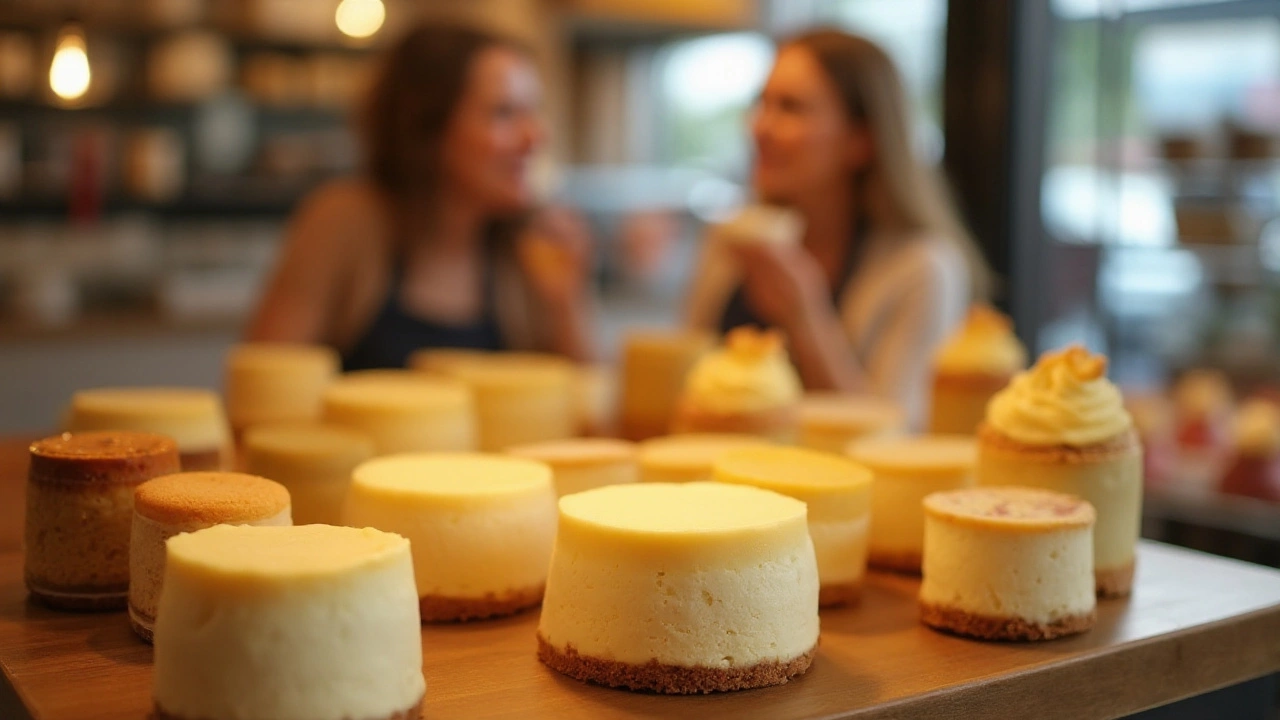
Tips for Baking the Perfect Cheesecake
Baking the perfect cheesecake requires a mix of patience, practice, and a bit of science. Whether you’re using cream or sour cream, starting with quality ingredients is crucial. Always choose fresh, high-quality dairy products, as they will greatly affect the flavor and texture of your cheesecake. Room temperature ingredients blend more smoothly and result in a creamier batter that bakes evenly. This might seem like a small step, but it minimizes the risk of lumps in your cheesecake, which can disrupt the silky smooth texture you’re aiming for.
Another tip is to avoid over-mixing your batter. Over-mixing can lead to incorporating too much air into the batter, which can cause cracks as the cheesecake cools. Mixing just until the ingredients are combined will prevent this issue. Additionally, always use a springform pan to allow for easy removal of the cheesecake once it’s done. Wrapping the bottom of the pan in aluminum foil and placing it in a water bath can promote even baking and prevent unsightly cracks, as the water bath adds steam to the oven and maintains an even baking temperature.
Perfecting the Baking Process
Preheating the oven is essential, and setting it to the recommended temperature ensures that your cheesecake will start baking immediately. An important trick is to turn off the oven towards the end of the baking process, leaving the cheesecake inside with the door slightly ajar. This gradual cooling process helps to prevent the surface from cracking by reducing the sudden change in temperature. Baking times can vary based on your oven and the specific recipe, but the cheesecake should be mostly set with a slight jiggle in the center.
Once out of the oven, patience is key. Allow the cheesecake to cool completely at room temperature before refrigerating it for several hours or overnight. This helps it to fully set and develop its rich, dense texture. During this resting period, flavors will meld, and you’ll notice that it's much easier to slice and serve without cracks or crumbling edges. A common piece of wisdom shared by many expert bakers is simply, "Bake with love and precision."
"A good cheesecake is a masterpiece born out of meticulous attention to detail," renowned chef Julia Johnson once said. "Every step, every ingredient, plays a role in achieving that perfect balance of flavor and texture."
Decor and Serving Suggestions
Presentation can elevate your cheesecake from delicious to truly memorable. Consider topping your masterpiece with fresh fruit, a drizzle of homemade fruit coulis, or a sprinkle of grated chocolate. These additions not only add a pop of color but also intriguing contrasts in flavor. When slicing your cheesecake, use a sharp knife dipped in hot water and wiped clean between each cut to ensure neat, professional-looking slices.
For those curious about calorie counts or nutritional information, it's interesting to note that a standard slice of cheesecake can vary significantly depending on ingredients used. For instance, substituting full-fat cream with low-fat alternatives may result in a lighter dessert, both in texture and caloric content. Here’s a small illustration of different calorie contents found in various cheesecake types:
| Type of Cheesecake | Calories per Slice |
|---|---|
| Classic with Cream Cheese and Cream | 400 |
| Classic with Cream Cheese and Sour Cream | 350 |
| Low-fat Cream Cheese Option | 250 |
Whatever your choice, remember that enjoying the creative process of baking is as important as the end result. Each adjustment can lead to delightful new variations in taste and texture, keeping the art of making cheesecake both exciting and rewarding.

